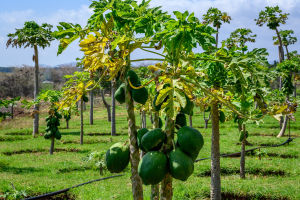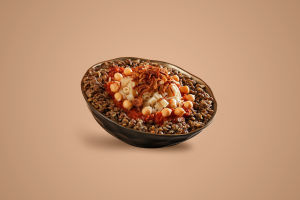Lykkers, have you ever had a dish that looked like a mess but tasted like magic? That's Koshary for you. It's Egypt's national dish, and it's one of those meals where everything gets mixed together—and somehow, it just works.
We're diving into this comforting, carb-loaded wonder today and sharing why it's so beloved and how we can even try making it at home.
What Exactly Is Koshary?
Koshary (sometimes spelled koshari or kushari) is a super filling Egyptian street food that's been around for over a hundred years. It's made of rice, lentils, pasta, chickpeas, crispy fried onions, and a zesty tomato-garlic sauce. Sounds like a lot, right? But the way these layers come together is what makes it so unforgettable.
We're not just throwing things into a bowl here—each layer is cooked separately, seasoned just right, and then stacked or mixed when it's time to eat. The result? A bowl that's rich in flavor, texture, and warmth.
Where Did Koshary Come From?
The story of Koshary is kind of a food journey. It has roots in Indian cuisine (from the dish khichdi, made of rice and lentils), which British troops brought to Egypt in the 19th century. Egyptians took that idea and turned it into something totally their own by adding pasta, tomato sauce, and crispy onions.
Over time, it became a favorite among locals because it was affordable, filling, and easy to make in large quantities. Today, you can find Koshary everywhere in Egypt—from tiny street stalls to famous restaurants. And now, thanks to social media and food bloggers, it's slowly gaining fans around the world too.
Breaking Down the Bowl
Let's take a closer look at what's actually in Koshary:
• Rice and lentils: These form the hearty base. Brown lentils are the usual pick, cooked until just soft.
• Pasta: Small macaroni or spaghetti pieces are the norm—yes, rice and pasta in one bowl!
• Chickpeas: These add protein and a soft texture.
• Fried onions: Super crispy and golden, they give that perfect crunch on top.
• Tomato-vinegar sauce: A tangy, slightly spicy sauce that pulls everything together.
• Garlic vinegar or chili oil (optional): For those who like it bold.
Each bite gives you a bit of crunch, a bit of chew, a little tang, and a whole lot of comfort.
Why We Love It
We love Koshary because it doesn't pretend to be fancy—but it delivers big time on flavor. It's the kind of meal that fills your belly and warms your heart. The textures are fun, the sauce is punchy, and you get a little bit of everything in every spoonful.
It's also a friendly meal to make. You don't need hard-to-find ingredients or special skills. If you can boil water and chop onions, you can make Koshary. It's also plant-based by default, which makes it a great option for people trying to eat more veggies or cut down on meat.
Can We Make It at Home?
Yes, we absolutely can! Here's a simplified version you can try in your own kitchen:
1. Cook your brown lentils and rice together in salted water.
2. Boil pasta separately and drain.
3. Sauté finely sliced onions until golden brown and crunchy.
4. Make a quick sauce by cooking garlic, tomato paste, cumin, salt, pepper, and vinegar together.
5. Heat some canned chickpeas.
6. To serve, layer rice and lentils at the bottom, add pasta, top with chickpeas, pour the sauce, and finish with fried onions.
Trust us, once you try it, you'll be making it again and again.
It's More Than Just Food
Koshary isn't just a dish. It's a symbol of comfort, community, and creativity. It's the kind of thing we'd make for a movie night, a lazy Sunday lunch, or even a dinner party where we want to surprise our guests with something different. It's all about sharing something humble but delicious—and honestly, we love that.
What Do You Think, Lykkers?
Have you tried Koshary before? Would you give it a go now that you know what's in it? Or maybe you already have your own version of a comfort bowl at home. Share with us—we'd love to hear your thoughts and swaps!
Let's keep exploring these global flavors together. Because sometimes, the best food is the one that brings people (and ingredients) together in the most unexpected way.


